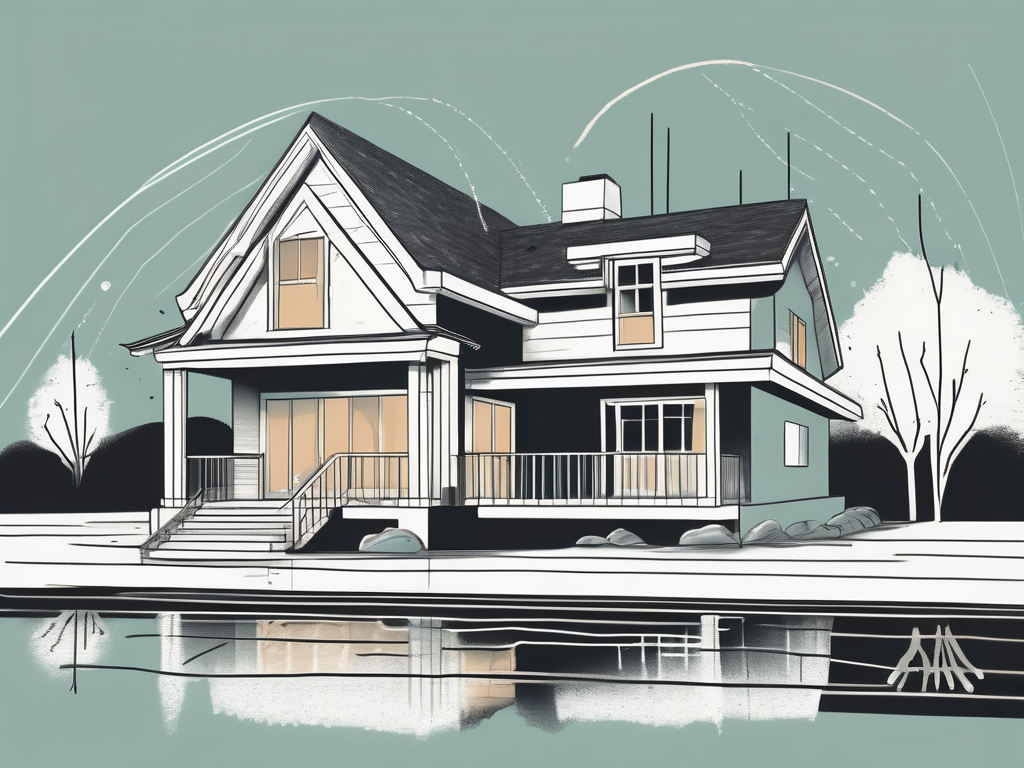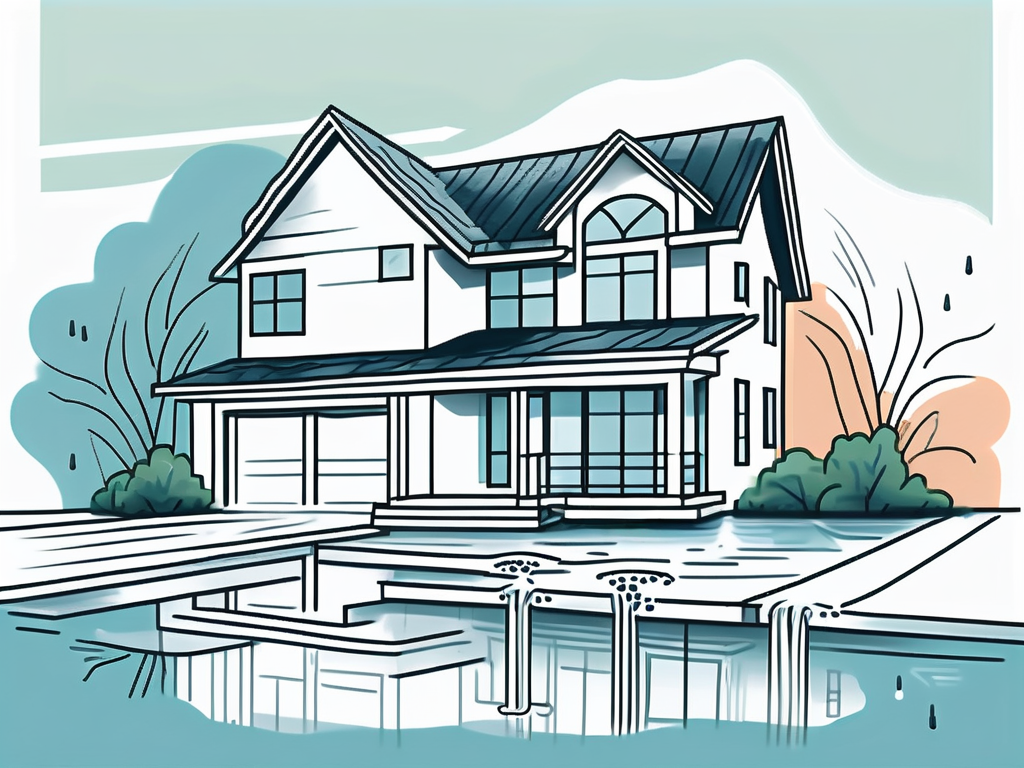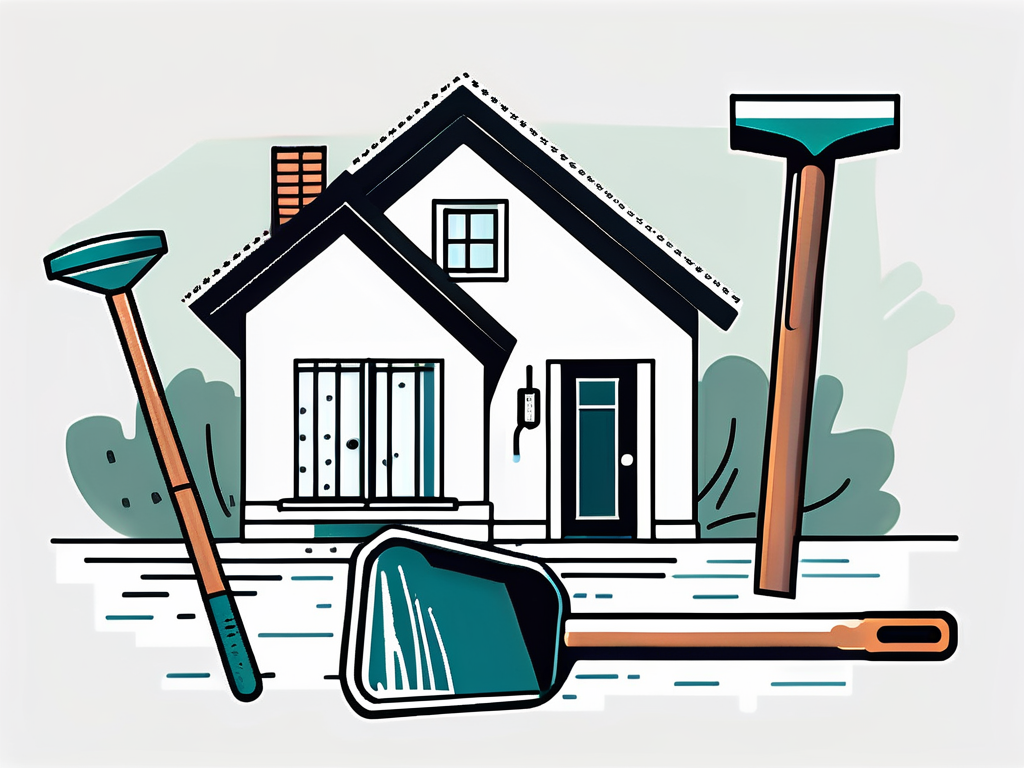
How to Effectively Drain Your House: A Comprehensive Guide
Drainage is a critical aspect of home maintenance that often goes unnoticed until it's too late. A well-drained house can prevent a myriad of issues, from structural damage to health hazards. In this guide, we will explore the importance of proper house drainage, signs of potential drainage issues, essential tools needed for effective drainage, a step-by-step guide to draining your house, and tips for maintaining your drainage system.
Understanding the Importance of Proper House Drainage
Ensuring effective drainage in and around your home is fundamental for maintaining the integrity and safety of your living space. Proper drainage systems facilitate the safe disposal of excess water, which is essential during periods of heavy rainfall or melting snow. Neglecting this critical aspect can lead to severe problems that may compromise both your home and health.
The Role of Drainage in Home Maintenance
A well-designed drainage system helps to manage water flow effectively, preventing water from pooling in unwanted areas. This not only protects your foundation but also safeguards your landscaping features. A house that drains properly will have significantly lower risks of water damage, erosion, and related maintenance costs over time.
Moreover, an efficient drainage system contributes to your home's overall energy efficiency. When your home is well-drained, it ensures that moisture does not seep into walls and insulation, reducing the need for extensive heating or cooling systems. Keeping your home’s indoor environment stable leads to lower energy bills and enhanced comfort.
In addition to these benefits, proper drainage also plays a crucial role in preserving the aesthetics of your property. Well-drained yards are less likely to develop unsightly puddles or muddy areas, which can detract from the beauty of your landscaping. Furthermore, maintaining a dry environment around your home can help protect outdoor features like patios, decks, and walkways from deterioration caused by excess moisture.
Potential Problems Caused by Poor Drainage
Poor drainage can result in a range of serious problems. Water accumulation can weaken the foundation of your house, leading to cracks and structural instability. This not only affects the safety of your property but also decreases its market value.
Additionally, excessive moisture can lead to pest infestations, as insects and rodents often thrive in damp environments. These nuisances not only cause distractions but can also pose health risks to you and your family. Furthermore, water pooling can contribute to mold and mildew growth, which can lead to respiratory issues and allergies if left untreated.
Another critical concern with inadequate drainage is the potential for flooding during heavy rainstorms. Homes located in low-lying areas or near bodies of water are particularly vulnerable. Flooding can cause extensive damage to both the interior and exterior of a home, leading to costly repairs and significant disruption to daily life. Installing proper drainage solutions, such as French drains or sump pumps, can mitigate these risks and provide peace of mind during stormy weather.
Identifying Signs of Drainage Issues
The sooner you can identify drainage issues, the better equipped you'll be to address them. Understanding what signs to look for can save you from significant repairs and health concerns. Regularly inspecting your home’s drainage can make a substantial difference in your maintenance routine.

Water Stains and Damage
Water stains on walls or ceilings are a clear indication of a drainage problem. These stains can develop as moisture begins to seep into the structure of your home. If you observe discoloration, it’s essential to investigate further to determine the source and resolve the underlying issues.
Look for bubbling paint or peeling wallpaper, as these may also signal moisture problems. Catching water damage early can prevent costly repairs down the line. Additionally, it’s wise to check for any unusual dampness in areas like attics or crawl spaces, as these hidden spots can harbor water issues that may not be immediately visible. Keeping a close eye on these areas can help you maintain the integrity of your home and avoid extensive damage.
Mold and Mildew Growth
Mold and mildew can thrive in damp environments, and detecting them in your home should serve as an urgent wake-up call. These fungi love moist spaces, particularly in basements and bathrooms. The presence of a musty smell or visible mold growth is a strong indicator that drainage issues need immediate attention.
Not only does mold pose health risks, but it can also lead to significant destruction of your home’s structure if left unchecked. Professional remediation might be required depending on the severity of the infestation. Furthermore, it's important to understand that certain types of mold can release spores into the air, which can exacerbate allergies or respiratory issues for sensitive individuals. Regularly monitoring humidity levels and ensuring proper ventilation in susceptible areas can help mitigate these risks.
Foundation Cracks and Settlement
Cracks in your foundation can have multiple causes, but poor drainage is one of the primary culprits. If you begin to notice visible cracks or significant settling of your home, it’s crucial to evaluate your drainage systems immediately. These problems not only indicate drainage failure but can also lead to much larger issues if not addressed quickly.
Sagging floors or misaligned doors are also signs that your foundation is affected. Consult a specialist who can assess the situation accurately and provide effective solutions. Additionally, consider implementing regular maintenance checks on your gutters and downspouts, as these systems play a vital role in directing water away from your foundation. Proper grading around your home can also prevent water from pooling near the foundation, further protecting your property from potential damage.
Essential Tools for House Drainage
Equipping yourself with the right tools can enhance your ability to address drainage problems effectively. Here is a list of essential tools you should consider for maintaining your home's drainage systems.

Drain Snakes
Drain snakes, often referred to as augers, are vital tools designed to clear clogs from drains and pipes. They can reach deep into your plumbing, eliminating blockages that traditional cleaning methods might struggle with. Having one on hand can save you time and frustration when sudden clogs occur. There are various types of drain snakes available, including manual and powered versions, allowing you to choose one that best fits your needs. For instance, a manual snake is great for small jobs and offers more control, while a powered auger can tackle larger, more stubborn clogs with ease.
Plungers and Drain Bladders
A good plunger is an essential piece of equipment for any homeowner. It can effectively dislodge clogs caused by materials like hair or soap scum in sinks and bathrooms. For more stubborn blockages, drain bladders can provide a more powerful cleaning solution by exerting pressure to remove the obstruction. It’s worth noting that there are different types of plungers, such as cup plungers for sinks and flange plungers specifically designed for toilets, ensuring that you have the right tool for the job. Additionally, learning the proper technique for using these tools can significantly increase their effectiveness, making it easier to resolve drainage issues without the need for professional help.
Inspection Cameras
Investing in an inspection camera can give you a clear view of what’s happening inside your pipes. This high-tech tool allows you to identify problems that conventional methods cannot reach, such as tree root invasions or cracks in the pipes. A visual inspection can guide your next steps and save on costly investigations. Many inspection cameras come equipped with LED lights to illuminate dark spaces, and some even allow you to record video footage for further analysis. This can be particularly useful for keeping a record of the condition of your plumbing over time, helping you to spot potential issues before they escalate into major repairs. Furthermore, using an inspection camera can help you understand the layout of your plumbing system, which can be invaluable when planning future renovations or upgrades.
Step-by-Step Guide to Draining Your House
Now that you understand the importance of proper drainage and have the right tools, let's walk through a simplified step-by-step procedure for effectively draining your house.
Preparing Your Work Area
Before diving into the task, take time to prepare your work area. Clear out any obstructions that may hinder your work in areas like the basement or crawl space. This will ensure you can easily maneuver and access all necessary components of your drainage system.
Gather all your tools and supplies. Having everything on hand will help prevent interruptions during the process, making your work smoother and more efficient. Consider using a checklist to ensure you don’t forget any essential items, such as gloves, a bucket, and a flashlight. Additionally, wearing appropriate clothing is crucial; old clothes that you don’t mind getting dirty will allow you to work freely without worrying about stains or damage.
Clearing Clogs and Blockages
Once your area is prepped, begin to clear any visible clogs in your sinks, tubs, or showers. Use your drain snake to reach deeper blockages. For toilets, efficient plunging can often restore normal function. If initial attempts don’t succeed, consider using a drain bladder or calling in a professional.
Regular maintenance is key. Ensure to clean out hair, soap, and other debris from drains on a routine basis to prevent future clogs. You might also want to implement a monthly cleaning schedule, which could include pouring a mixture of baking soda and vinegar down your drains. This natural solution can help break down buildup and keep your pipes flowing smoothly. Additionally, be mindful of what goes down your drains; avoiding flushing items that can cause blockages will save you time and effort in the long run.
Flushing Your Drainage System
After addressing the immediate clogs, it’s vital to flush your entire drainage system. This can be done using hot water or specialized flushing agents that help to dissolve remaining buildup. Running hot water through your plumbing can clear away residual grime and debris.
You might also want to consider a yearly flush of your system to ensure maximum efficiency. This proactive step can significantly reduce the impact of unforeseen clogs in the future. Moreover, during this flush, inspect your pipes for any signs of wear or damage. Look for leaks, corrosion, or any unusual odors that may indicate a more serious issue. Keeping a close eye on your plumbing system can help you catch potential problems early, saving you from costly repairs down the line. Remember, a well-maintained drainage system not only improves the functionality of your home but also contributes to a healthier living environment.
Maintaining Your House Drainage System
Regular maintenance is essential for keeping your house's drainage system in optimal condition. Committing to routine inspections and cleaning can prolong the life of your system and reduce repair costs.
Regular Cleaning and Inspection
Setting a schedule for regular cleaning and inspections helps prevent unexpected drainage issues. Check visible pipes for corrosion and leaks. You can also inspect your gutter systems and downspouts to ensure they are functioning properly during heavy rain. An annual inspection by a professional can catch issues that you might miss.
Additionally, it’s wise to keep an eye on any tree roots that may be encroaching on your drainage system. Roots can infiltrate pipes, leading to blockages and potential damage. Consider using root barriers or regularly trimming nearby trees to mitigate this risk. Another aspect to monitor is the condition of your sump pump, if you have one; testing it periodically ensures that it will function correctly during heavy rainfall or flooding.
Preventing Future Drainage Issues
Preventative measures can save you from many headaches down the line. Consider installing gutter guards to keep debris out of your downspouts and ensuring that your landscaping slopes away from the foundation of your home. These small adjustments can have a significant impact on your drainage efficiency.
Furthermore, educate your family on what not to put down drains and toilets; minimizing harmful materials can greatly reduce the incidence of clogs. It’s also beneficial to regularly flush your drains with hot water or a mixture of baking soda and vinegar to help break down any buildup that may occur over time. This simple maintenance step can keep your pipes clear and functioning well.
When to Call a Professional
While many drainage issues can be addressed independently, knowing when to call in a professional is critical. If you encounter recurring drainage problems despite your best efforts, it may signify a larger, more complex underlying issue that requires expert attention.
Difficult blockages, extensive mold growth, or significant foundation damages should always be evaluated by a professional plumbing service or a drainage specialist. Investing in expertise can save you time, stress, and costs in dealing with profound issues down the road. Moreover, professionals often have access to advanced tools like video camera inspections, which can provide a clear view of the inside of your pipes and help diagnose problems that are not visible from the outside.
